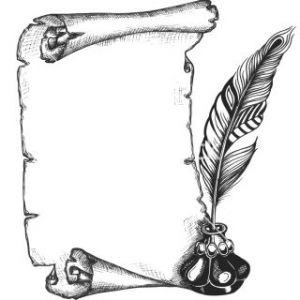How to tie and dye
Posted by Nadia Winget on December 9th, 2021
Tie and dye are ancient craft that has been around for centuries. Dyeing fabric by tying it in knots was a way of preserving cloth from natural causes such as decay from exposure to sunlight, moths, or excessive wetness. It also helped create a wide variety of colours without the use of expensive dyes. Today, it is still used as a popular form of art among many cultures because it\'s easy to do and the process produces some really unique results. Tie and dye clothing is very stylish and has a great casual look that is unique in every way, especially since it is handmade and not mass-produced.
Here’s a step-by-step method on how to carry out the tie and dye process:
- Gather all of your materials.
Before starting the process of tie and dye, you should gather up all your materials and equipment, which include:
- A bucket to mix your dye in
- Rubber gloves and old clothes that you don\'t mind getting dyed, as well as an apron for protecting your clothing.
- Fabric material such as scarves or fabric bought at the store and prewashed so it\'s ready for this purpose. You can also use leftover T-shirts from previous projects because they will be ruined anyway once you finish tying them up with string, which is required later on. It doesn\'t have to be expensive fabric either; even using cheap handkerchiefs would do just fine since there are no other colours used but red.
- Tie the fabric around the pole to create a knot.
- The process starts by tying the string around a pole in loops, leaving space between each loop.
- Pile up all of your fabric into the centre and tie the end along with one other edge to create an X-like shape where two ends are tied together while the rest hangs out on both sides. Make sure you don\'t cover any part of it when putting it in place; leave enough room for dyeing later on so that no parts get left behind or half dyed because they were stuck under another material during application.
- The more you tie, the tighter the pattern gets and the more defined it will appear. This is an important step to take into consideration when making your design because you want that image or picture to come out as clearly as possible.
- If desired, fill a large bucket with enough room for all of your products and fill it halfway with water, adding in some vinegar if desired (this helps set the dye, so don\'t skip this part). You\'ll need one cup for every gallon of liquid used, which can be purchased at any grocery store along with food colouring. Simply mix these two items together until they are fully combined before pouring them over fabric products already tied onto poles. The colour should look like a rich red tone instead of bright pink. If needed, add drops from previous vials until the colour is to your liking. If you are aiming for a pastel look, try adding more vinegar or food colouring to the mix during this step.
- After the dye has been added and products have soaked, drain them over the bucket so that any excess product can be reused within another vial (you don\'t want to waste anything). Leave items tied up until they\'re ready to be used again. Some prefer using old hangers with clothespins attached, which would allow for maximum space in between each pair. Leave the items in there for about 30 minutes and then rinse them out in the sink with cool water.
Of course, you don\'t need to stop at just clothes and textiles! You can use these same methods to dye your hair as well, by infusing colour into it from the roots all the way down to the tips. With this method, there is no waiting period required, so just mix up your formula and tie your head of hair into a bun before going to bed or putting on an old shower cap for any length of time that works best for you (remember: everyone’s scalp is different). When ready, simply wash the product out and enjoy! You can use the product for many types of clothing, such as sarees online in Sri Lanka.
- Untie after allowing the area to dry for 24 hours or more.
According to traditional methods, however, you need to let it dry for 24 hours or more before you can remove the string. After that, hang the fabric to dry for at least one week before wearing it in order to avoid wear and tear.
Tie and dye products, such as handmade products in Sri Lanka, are made by small business owners, usually, women in rural areas, who are using their skills in order to generate an income for themselves to sell locally or on eCommerce websites that have men’s and ladies clothing online, and sometimes they create job opportunities for others in their villages. These items are in great demand due to the uniqueness and creativity of the process. It\'s not only limited to clothing; tie and dye have also been used in other products such as rugs, pillows, bedding items, and even home decor items such as wall hangings, curtains, etc.


